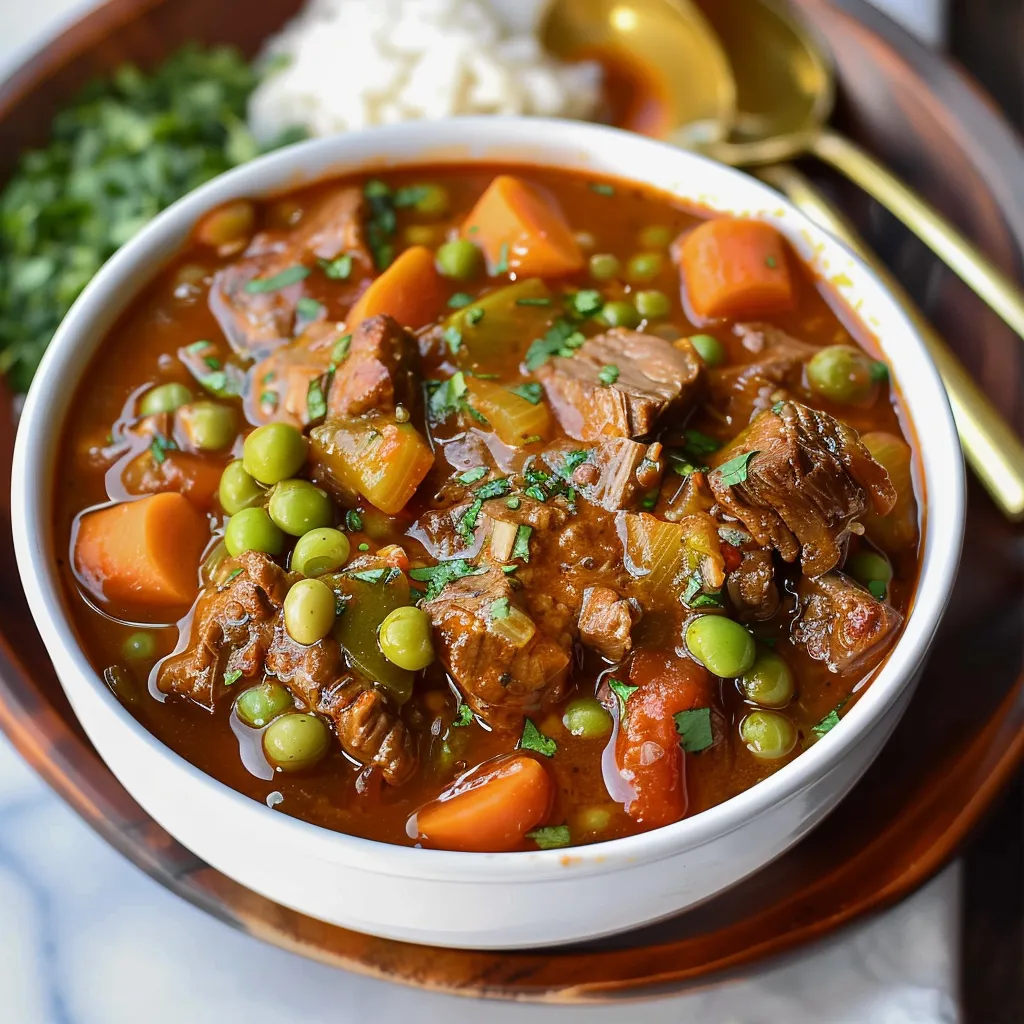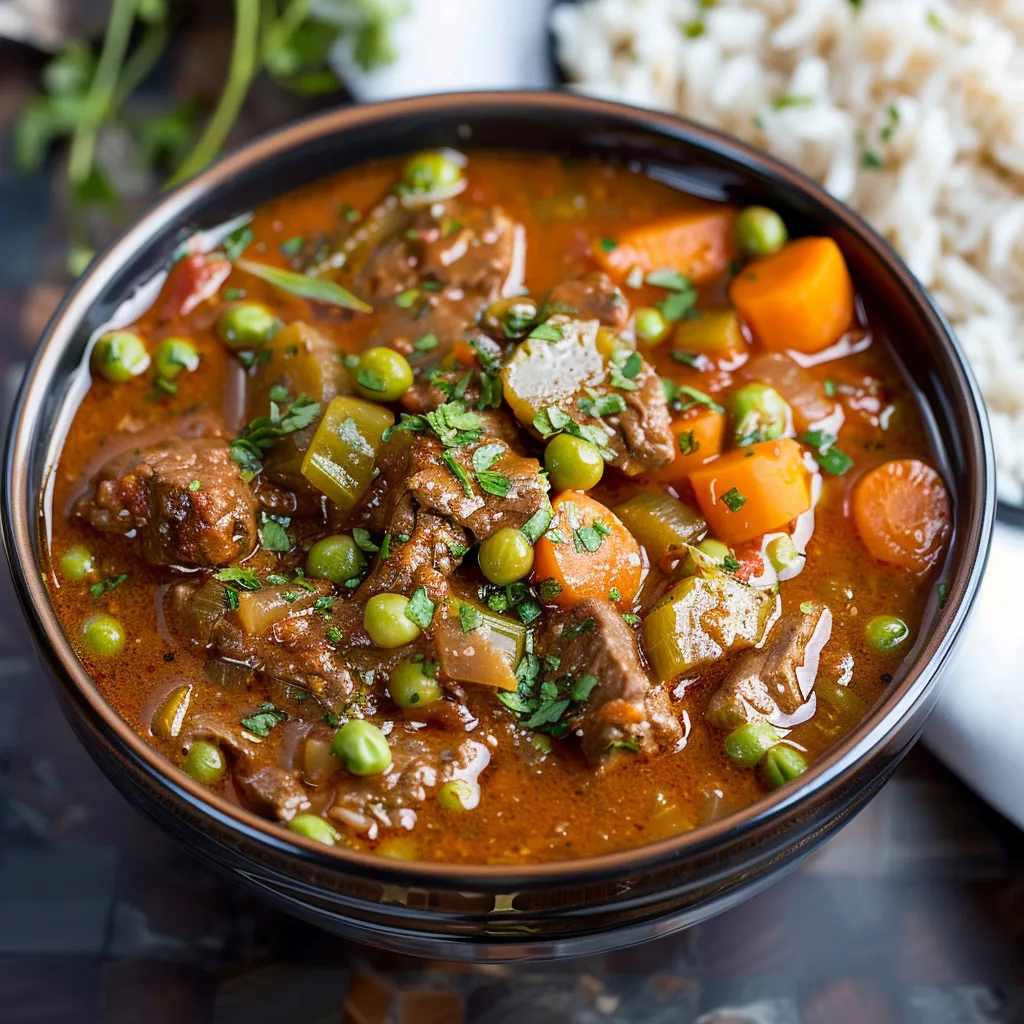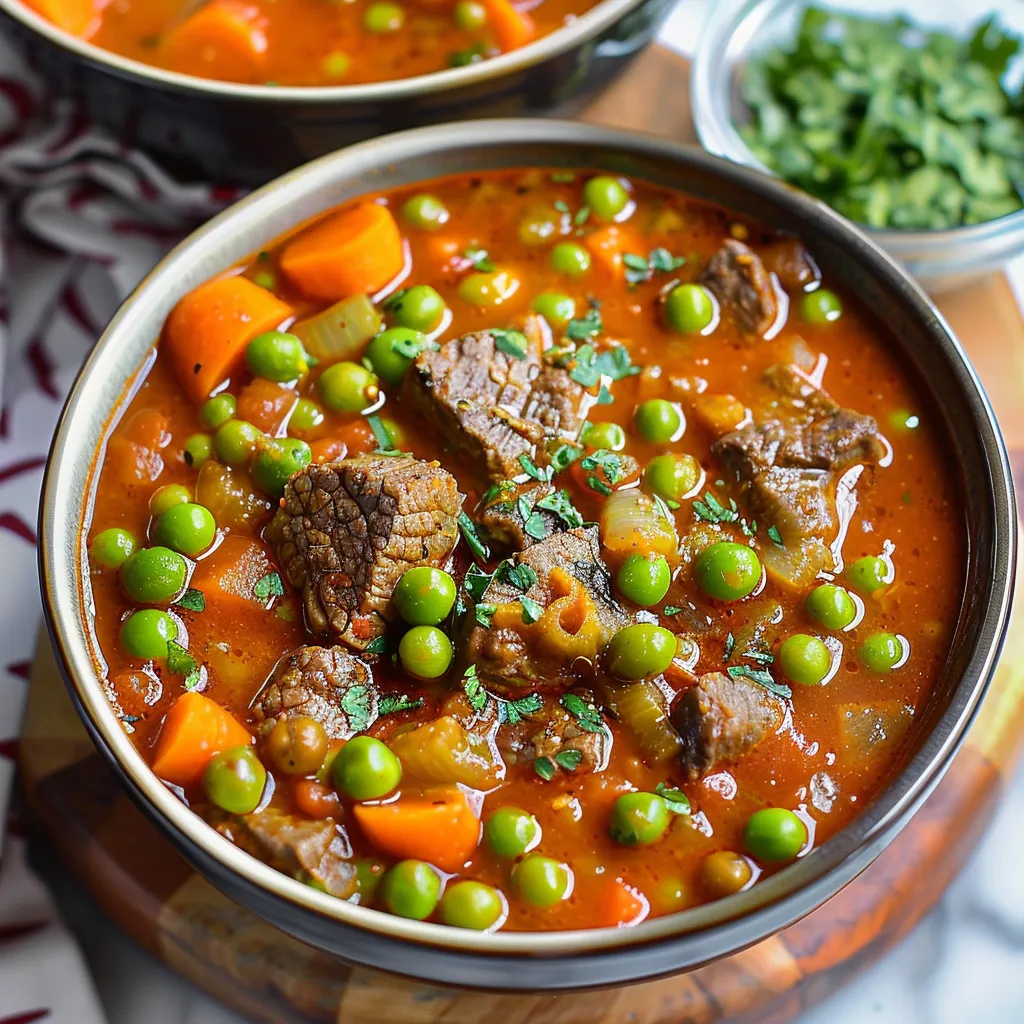 Pin to Favorites
Pin to Favorites
The aroma of simmering Peas and Carrots Stew – or Bazella w Riz as it's traditionally known in Lebanon – transforms an ordinary kitchen into a place of comfort and nourishment. This hearty dish strikes the perfect balance between rustic simplicity and rich, developed flavor. The tender beef chunks, having surrendered to low, slow heat, practically melt in your mouth while sweet peas and carrots provide both vibrant color and earthy sweetness against the aromatic tomato-based broth.
I first encountered this dish when my Lebanese neighbor brought over a pot after the birth of my second child. Exhausted and overwhelmed, I found myself drawn to the kitchen by its irresistible aroma. One spoonful, and I was transported – it was exactly the kind of nourishing comfort I needed. I've been making my own version ever since, tweaking the proportions until achieving this perfect balance.
Essential Ingredients and Selection Tips
- Beef Chuck: Choose well-marbled pieces cut into 1-inch cubes. The marbling melts during the long cooking process, keeping the meat moist and tender.
- 7 Spice (Baharat): This aromatic spice blend typically includes allspice, black pepper, cinnamon, cloves, coriander, cumin, and nutmeg.
- Fresh Cilantro: Don’t skip this ingredient, as it contributes an essential earthy note to the stew.
- Tomato Sauce: Look for plain, unseasoned tomato sauce to maintain the authentic spice balance.
 Pin to Favorites
Pin to Favorites
Detailed Cooking Instructions
- Prepare Your Ingredients:
- Cut 1.5 pounds of beef chuck into 1-inch cubes. Chop 3-4 cloves of garlic and ¼ cup fresh cilantro. Have 2 cups of frozen peas and 2 cups of sliced carrots ready. Measure 1 cup of tomato sauce, 2 cups of broth, and 1 tablespoon of 7 Spice.
- Master the Searing Technique:
- Heat 2 tablespoons of olive oil in a Dutch oven over medium-high heat. Brown the beef in batches for 8-10 minutes total, transferring to a plate when seared.
- Build the Aromatic Base:
- Reduce heat to medium, add another tablespoon of olive oil, and sauté garlic and cilantro for 2 minutes.
- Create the Flavorful Broth:
- Pour in the tomato sauce and broth, scraping up browned bits. Stir in 7 Spice and bring to a simmer.
- Incorporate Vegetables and Return the Beef:
- Add the peas, carrots, and seared beef to the pot. Stir gently to distribute ingredients.
- Perfect the Slow Simmer:
- Cover and simmer on low for 30-60 minutes, stirring occasionally, until beef is tender.
- Reduce and Concentrate:
- Uncover and simmer another 15-20 minutes, allowing the sauce to thicken slightly.
- Rest Before Serving:
- Remove from heat and let rest for 10 minutes before serving.
When my Lebanese friend first tasted my version of this stew, she smiled knowingly and said it reminded her of her grandmother's kitchen. She then shared her family's secret – a tiny pinch of cinnamon added at the end brightens all the flavors. I've incorporated this finishing touch ever since, and it makes a subtle but noticeable difference in the overall complexity.
The Art of Proper Searing
The most crucial technique for developing deep flavor in this stew is properly searing the meat. Beyond ensuring the meat is thoroughly dried before searing, I've learned to let the pan recover its heat between batches. Each piece needs about 2-3 minutes of uninterrupted contact with the hot pan to develop proper browning.
Regional Variations Worth Exploring
Palestinian versions have a higher carrot-to-pea ratio and cinnamon sticks. Syrian variations include pomegranate molasses for acidity. Some coastal Lebanese recipes incorporate preserved lemon for brightness.
Serving Traditions That Enhance The Experience
The traditional accompaniment is Lebanese rice with toasted vermicelli. Some serve it separately, while others prefer the stew ladled over rice with warm pita bread on the side.
Making It Ahead: The Benefits of Time
This stew develops deeper flavor when made a day ahead. Store in the refrigerator and reheat gently, adding broth if needed. For meal prep, freeze in portion-sized containers.
I'll never forget the time I made this stew for my children during a particularly cold winter week. My younger son, normally suspicious of anything with visible vegetables, took one tentative bite and then devoured his entire bowl.
Final Thoughts
This Peas and Carrots Stew embodies what I love most about traditional cooking – the transformation of humble ingredients into something truly special through time-honored techniques and careful attention.
 Pin to Favorites
Pin to Favorites
Frequently Asked Questions
- → What is 7 Spice and where can I find it?
- 7 Spice (also called baharat) is a Middle Eastern spice blend typically containing black pepper, cumin, cinnamon, cloves, nutmeg, cardamom, and paprika. You can find it at Middle Eastern grocery stores, well-stocked supermarkets, or online. Alternatively, you can make your own by combining equal parts of the mentioned spices.
- → Can I use fresh peas and carrots instead of frozen?
- Yes, fresh peas and carrots work well in this recipe. For fresh peas, you'll need about 3 cups shelled. For carrots, use 1-2 medium carrots peeled and chopped. The cooking time might need to be adjusted slightly - add fresh carrots earlier in the cooking process to ensure they become tender.
- → What cut of beef works best for this stew?
- Chuck beef is ideal because it becomes tender and flavorful when slowly cooked. Other good options include stew meat, brisket, or round. The key is to choose a cut with some fat marbling that can withstand longer cooking times without becoming tough.
- → What is traditional Arabic rice pilaf and how do I make it?
- Traditional Arabic rice pilaf (called ruz) typically involves cooking long-grain rice with vermicelli noodles that have been toasted in butter or olive oil. To make it, sauté 1/4 cup broken vermicelli in 2 tablespoons butter until golden, add 2 cups rinsed rice, stir to coat, then add 4 cups water and salt. Bring to a boil, reduce heat, cover and simmer for 15-20 minutes.
- → Can I make this stew in a slow cooker or pressure cooker?
- Yes, for slow cooker: sear the meat and sauté onions/garlic as directed, then transfer everything to a slow cooker and cook on low for 6-8 hours or high for 3-4 hours. For pressure cooker/Instant Pot: use the sauté function for the initial steps, then pressure cook for 20 minutes with natural release.
